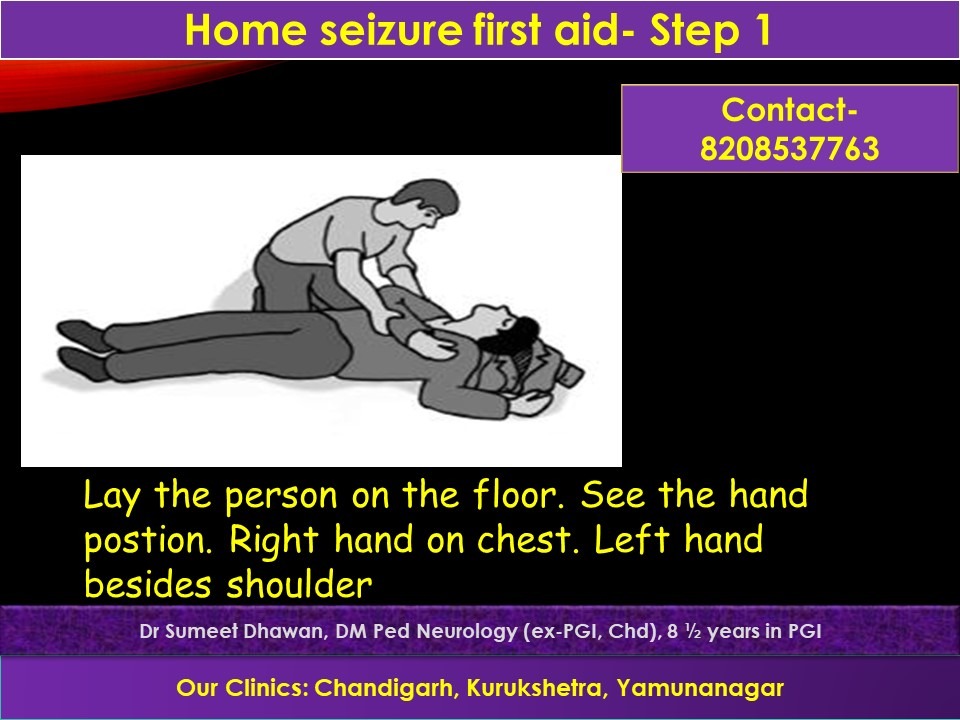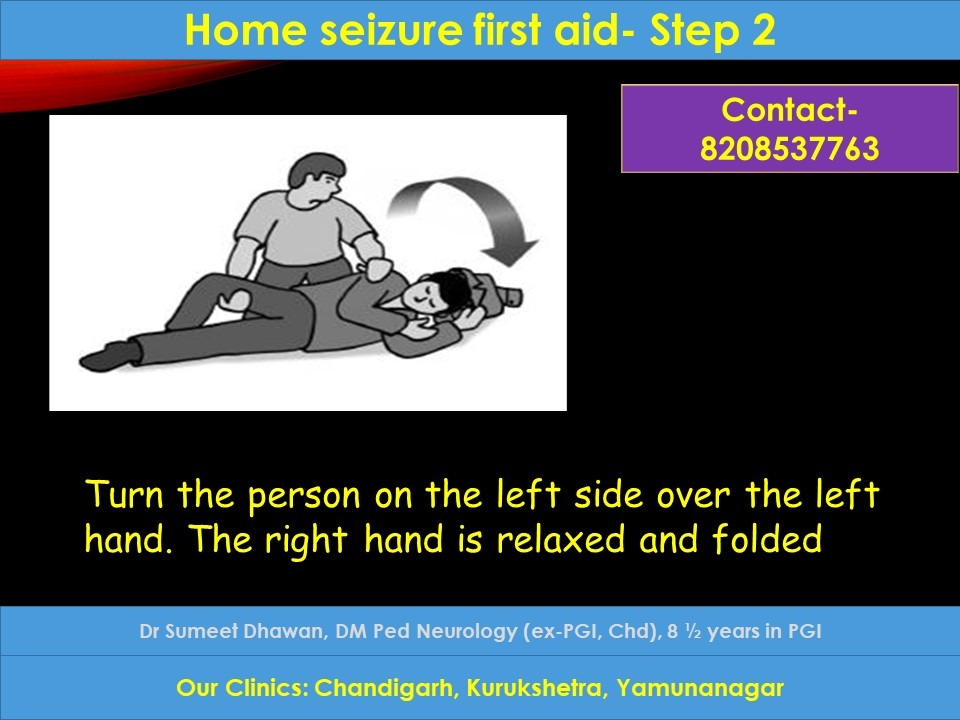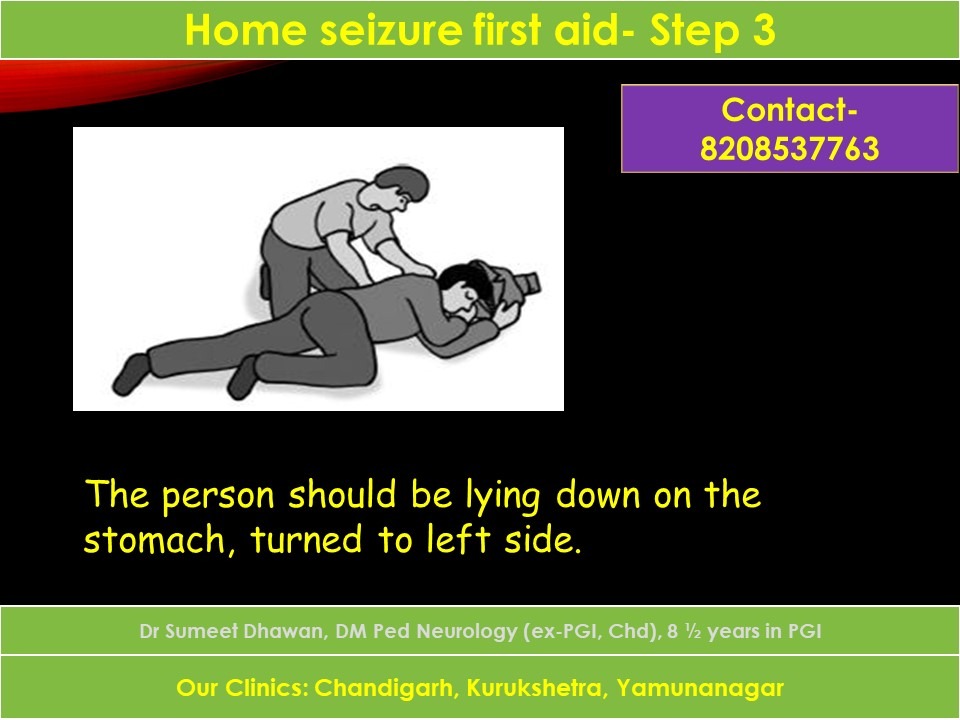Seizure first aid- Simple 3 steps at home can save your life!!
Advice for school teachers - What to do in case of seizure



What to Do during a seizure
If someone is nearby, ask them to call your doctor.
If no one is with you, follow the steps below and then call
the doctor:
- Gently place on the floor or ground, and remove any nearby objects.
- Turn the person gently onto one side. This will help the person breathe.
- This will prevent choking on saliva (spit).
- If there is vomit, clear out the mouth gently with your finger.
- Loosen any clothing around the head or neck.
- Make sure breathing OK.
- Don’t try to prevent from shaking — this will not stop the seizure and will cause more discomfort
- Don’t put anything in mouth. The person will not swallow his or her tongue, and forcing teeth apart could cause injuries or block the airway.
- Don’t give anything to eat or drink, and don’t give any medicine pills or liquid by mouth until the person is completely awake and alert.
- Try to keep track of how long the seizure lasts.
- The patient may be sleepy or may take a while to get back to normal after the seizure. Stay with the person until he or she is awake and aware, and let him/her rest after the seizure.
- Don’t use bathtub or near ANY water for 1-2 years
- When children are riding bikes, skateboarding, or rollerblading, they should always wear a protective helmet.
- Seizure patient should avoid heights. They should not play on high playground equipment or climb trees, and they should not sleep on the top bunk of a bunk bed.
- HOME SEIZURE MANAGEMENT EXPLAINED. To use midazolam nasal spray (0.5 mg per puff, discuss dose with doctor). ___puff sos in nose if seizure continues for more than 2 min. May repeat the same dose after 5 min. IF seizure continues may go to the nearest hospital. During seizures, do not try to insert any object or finger in the mouth. Turn the person on the left side. The person should lie on the left shoulder. Clear any excess secretion on face by using handkerchief. To make video of any abnormal movements
- To maintain diary of seizure recurrence. To bring all the medications during every OPD visit for confirmation of doses
Other precautions
- To bring all treatment related documents, MRI and summaries in every visit to hospital
- Risk of rash explained. To review sos in emergency/OPD if rash appears. Risk of likelihood of refractory epilepsy/seizure recurrence in spite of continued use of medications has been explained
- Risk of excessive sleepiness for 1-2 due to medicines explained and avoid unsupervised play or walking on road. To accompany the child while going to school
- Patient explained that anti-epileptic drugs may be needed for long period with minimum duration of 2 years. Medication is to be continued even during fever and not to be dis-continued. There is risk of seizure recurrence, even after stoppage of medicines explained after complete 2-3 years treatment